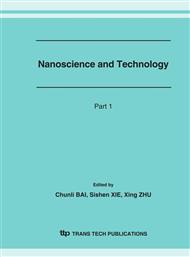p.721
p.725
p.731
p.735
p.739
p.743
p.747
p.751
p.755
The Nano Membrane-Like Structure of the Precambrian Microfossils under Atomic Force Microscope (AFM)
Abstract:
Weng`an fauna in Guizhou, China provides a unique window for the evolution of the early life especially since the animal embryos and sponge is found there. Phosphatization makes the fossils preserve in details including cells and subcellular structure. Here we use atomic force microscope observing the surface of some three dimensional preserved embryo fossils and the ultra membrane-like structure is found under atomic force microscope (AFM) while such structure can`t be found under scanning electron microscope (SEM). The membrane-like structure is approximately 10nm in thickness which maybe one part of the fossil embryos or belong to another nano scale microfossils. Therefore, AFM provides a new method for the study of the ultra structure of the microfossils from Weng`an fauna.
Info:
Periodical:
Pages:
739-742
Citation:
Online since:
March 2007
Authors:
Price:
Сopyright:
© 2007 Trans Tech Publications Ltd. All Rights Reserved
Share:
Citation:


